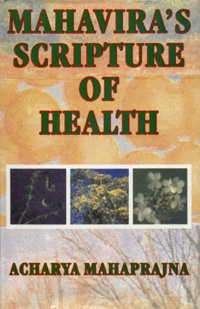
Leshyadhyana [Perception of Psychic Colours] and Svasthya [health]
The five colours connected with a person's activities may have evil effect or beneficial effect on him. The same thing was mentioned about the smell. The smell may be stench or it may be fragrance. If our emotions are pure, fragrance would emanate from us. If our emotions are impure, we would start giving out stench. It was said, "The breath of a Tirthankara is like that of a lotus flower. What is the reason? The reason is the pure emotion. If the emotions are pure, the pudgalas of breath too would have good effect. The fragrance like the lotus flower comes only from the pudgalas that have good effect. The pudgalas of pure emotional flow produce fragrance. If the emotional flow is impure, they can give out the stench like a rotten body. The same thing happens in the case of the taste and the touch. If the emotional flow is pure, the taste which comes would be sweet like that of a fully ripe mango or a banana. If the emotional flow is impure, the taste would be bitter and astringent. If our emotional flow is pure, the touch would be soft and tender like butter. If the emotional flow is impure, the touch would appear hard, sharp and rough. In the modern colour therapy or the rays-therapy, only the colours have been identified. However, if we do the analysis, we find that apart from the colours, there are the taste and the touch also to deal with. Where leshya is concerned, the colour, the smell would change and then taste and the smell would also change.
If we discuss the problem of health on the basis, of this comprehensive principle, the natural conclusion would be that without understanding the leshya principle we would not be able to protect our health solely on the basis of medicines.
 Acharya Mahaprajna
Acharya Mahaprajna

